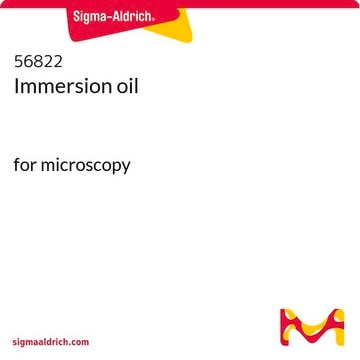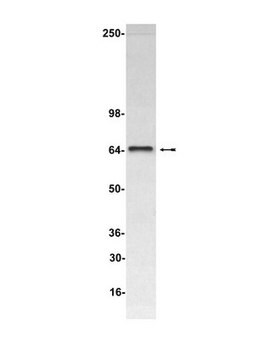L0159
Anti-Luciferase antibody produced in rabbit
IgG fraction of antiserum, buffered aqueous solution
Synonym(e):
Anti Luciferase Antibody, Firefly Luciferase Antibody, Luciferase Antibody, Luciferase Antibody - Anti-Luciferase antibody produced in rabbit
About This Item
Empfohlene Produkte
Biologische Quelle
rabbit
Qualitätsniveau
Konjugat
unconjugated
Antikörperform
IgG fraction of antiserum
Antikörper-Produkttyp
primary antibodies
Klon
polyclonal
Form
buffered aqueous solution
Verpackung
antibody small pack of 25 μL
Methode(n)
indirect immunofluorescence: 1:500-1:1,000 using eukaryotic cells transfected with a plasmid bearing the luciferase gene
western blot: 1:10,000 using purified Luciferase
Versandbedingung
dry ice
Lagertemp.
−20°C
Posttranslationale Modifikation Target
unmodified
Verwandte Kategorien
Allgemeine Beschreibung
Luciferase has become one of the more widely used reporter enzymes. The reporter plasmid contains the gene from the firefly Photinus pyralis. The enzyme catalyzes a bioluminescent reaction which requires the substrate luciferin as well as Mg+2 and ATP. Mixing these reagents with the cell extract containing luciferase results in a flash of light that decays rapidly. This light can be detected by a luminometer. The total light emission is proportional to the luciferase activity of the sample. The luciferase assay is fast and sensitive and does not require a radioactive substrate as in the CAT assay. A disadvantage of the luciferase assay is that it requires a rather expensive instrument, the luminometer, to measure enzyme activity.
Spezifität
Immunogen
Anwendung
Physikalische Form
Haftungsausschluss
Not finding the right product?
Try our Produkt-Auswahlhilfe.
Lagerklassenschlüssel
12 - Non Combustible Liquids
WGK
WGK 2
Flammpunkt (°F)
Not applicable
Flammpunkt (°C)
Not applicable
Analysenzertifikate (COA)
Suchen Sie nach Analysenzertifikate (COA), indem Sie die Lot-/Chargennummer des Produkts eingeben. Lot- und Chargennummern sind auf dem Produktetikett hinter den Wörtern ‘Lot’ oder ‘Batch’ (Lot oder Charge) zu finden.
Besitzen Sie dieses Produkt bereits?
In der Dokumentenbibliothek finden Sie die Dokumentation zu den Produkten, die Sie kürzlich erworben haben.
Kunden haben sich ebenfalls angesehen
Unser Team von Wissenschaftlern verfügt über Erfahrung in allen Forschungsbereichen einschließlich Life Science, Materialwissenschaften, chemischer Synthese, Chromatographie, Analytik und vielen mehr..
Setzen Sie sich mit dem technischen Dienst in Verbindung.








